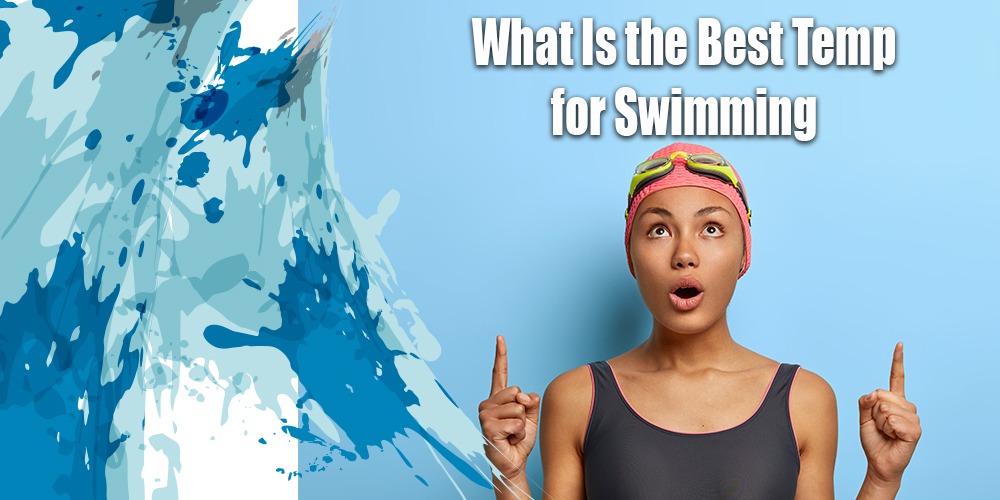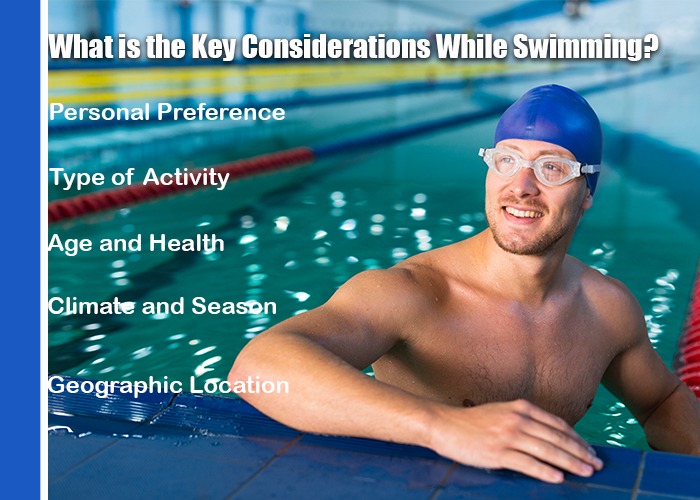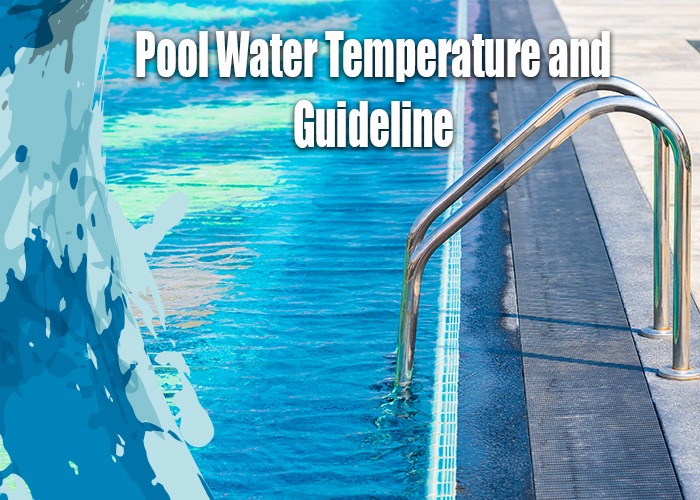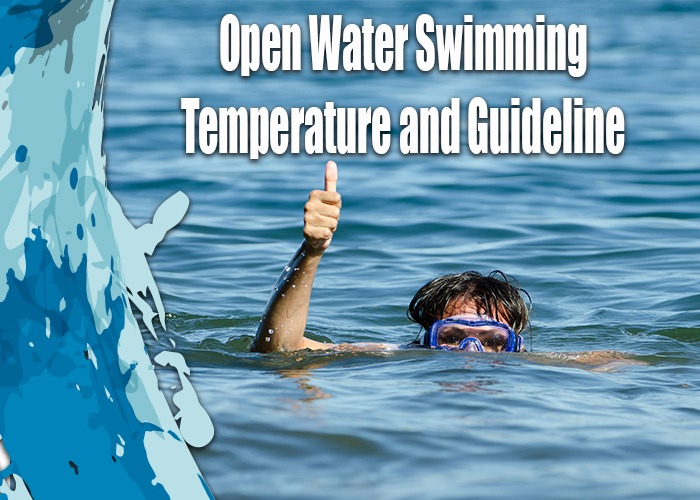Swimming is a beloved pastime, offering relaxation, exercise, and enjoyment of the water. Now, one crucial factor in ensuring a pleasant swimming experience is the water temperature as a lot depends on it. We know that the summer seasons are best for swimming but haven’t you heard of all the unexpected accidents that occurred? So, what is the best temp for swimming?
The ideal comfortable temperature for swimming can vary depending on personal preference, but most people find water temperatures between 78°F (25.5°C) and 82°F (27.8°C) to be comfortable for leisure swimming.
Let’s dive in and learn all the details about it.
What is the Key Considerations While Swimming?
Personal Preference: Perhaps the most significant factor in determining the ideal water temperature is personal preference. Besides, What one swimmer finds perfect, another may consider too cold or too warm. Some individuals find slightly cooler water invigorating, while others prefer the soothing warmth of a heated pool.
Type of Activity: The nature of your swimming activity plays a pivotal role in defining your ideal water temperature. Competitive swimmers, for example, often favor cooler water to maintain lower body temperature during rigorous training. Conversely, individuals swimming for relaxation might opt for warmer water.
Age and Health: Age and physical condition can greatly impact one’s comfort in various water temperatures.
Climate and Season: The external climate and the time of year can also affect your perception of water temperature. What might feel perfect on a sweltering summer day could differ from what you consider comfortable on a crisp, autumn morning.
Geographic Location: The location of your swimming spot can significantly influence water temperature. Coastal areas or regions near the equator tend to have warmer water, while inland lakes and rivers, especially in northern regions, may be cooler.
Pool Water Temperature and Guideline
Swimming is not only a fun and relaxing activity but also a fantastic way to stay in shape. When it comes to swimming in a pool, the water temperature plays a significant role in your overall comfort and swimming experience. Additionally, following certain guidelines can help ensure that your pool time is enjoyable, safe, and beneficial.
Pool Temperature Ranges:
what is the best temp for swimming is the first part to think about it. Pool temperatures can vary depending on the type of pool and the preferences of the swimmers. Here are some general guidelines for pool water temperatures:
Cool Pool (77-82°F or 25-28°C): Water in this temperature range is ideal for competitive swimmers and those engaging in vigorous workouts. It helps keep the body cool during physical exertion.
Comfortable Pool (82-86°F or 28-30°C): Most recreational swimmers prefer pool water in this range. It’s comfortable for leisurely swims and allows for extended relaxation in the water.
Warm Pool (86-90°F or 30-32°C): Some therapy and rehabilitation pools maintain warmer temperatures, which can be soothing for people with muscle soreness or joint pain.
Hot Pool (90°F or 32°C and above): Extremely warm pools are more commonly found in hot tubs and spas. These temperatures can be enjoyable for relaxation but are not suitable for vigorous exercise.
Guidelines for Swimming in a Pool “What is the best temp for swimming”:
Check the Water Temperature: Before you start your swim, check the pool’s water temperature. Most pools will display this information on a sign near the entrance or at the poolside.
Proper Swimwear: Choose appropriate swimwear for the pool. Swimsuits designed for swimming reduce drag and provide comfort and freedom of movement.
Shower Before Entering: Rinse off in a shower before entering the pool to remove lotions, oils, and other contaminants. This helps maintain water quality.
Follow Pool Rules: Observe and follow the rules and guidelines posted at the pool. These rules may include specific swimming lanes, hours, and other safety regulations.
Stay Hydrated: Even in the water, it’s essential to stay hydrated. Take sips of water as needed, especially if you’re swimming for an extended period.
Warm-Up and Cool Down: Spend a few minutes warming up with gentle strokes and stretching before swimming at full intensity. Likewise, cool down with slower strokes to prevent cramping.
Lap Etiquette: When swimming in lanes, be mindful of others sharing the pool. Stay to one side and avoid sudden stops or erratic movements to prevent collisions.
Watch for Signs of Overexertion: If you feel fatigued, dizzy, or experience muscle cramps, exit the pool immediately and rest. Overexertion can lead to accidents or injury.
Respect Other Swimmers: Be courteous to fellow swimmers. Avoid crowding or splashing excessively, and be mindful of the space you share.
Supervise Children: If you’re at a family-oriented pool, closely supervise children to ensure their safety. Pools often have separate areas or designated hours for young swimmers.
Practice Pool Safety: Know the location of emergency equipment, lifeguards, and pool safety rules. Always follow safety guidelines for your own well-being.
By adhering to these guidelines and being mindful of pool temperatures, you can enjoy a safe and comfortable swimming experience. Whether you’re swimming for exercise, relaxation, or fun, understanding the ideal temperature and following these rules will help you make the most of your time in the water.
Open Water Swimming Temperature and Guideline
what is the best temp for swimming- if you think about it. However, open-water swimming is a thrilling and challenging adventure that takes place in natural bodies of water, such as oceans, lakes, rivers, and even reservoirs. Unlike swimming in a controlled environment like a pool, open-water swimming is subject to the elements, including varying water temperatures. To enjoy this sport safely and comfortably, it’s essential to understand open-water swimming temperatures and the guidelines that should be followed.
Know the Water Temperature: Always check the water temperature before embarking on an open water swim. Local authorities, event organizers, or weather sources can provide this information.
Cold Water Acclimatization: If you plan to swim in cooler water, acclimatize your body by gradually increasing exposure to lower temperatures. Start with shorter swims and gradually extend your time in the cold water.
Wetsuits: Consider wearing a wetsuit or other thermal swimwear in cooler water to maintain body heat. Ensure it fits properly and doesn’t restrict your movement.
Safety Equipment: In addition to wetsuits, use safety equipment like bright-colored swim caps and swim buoys to enhance visibility to others and provide floatation.
Stay Hydrated: Dehydration can occur in hot water, so be sure to hydrate adequately before and after your swim. So, Carry water with you on longer swims, if possible.
Watch for Signs of Hypothermia: In colder water, watch for signs of hypothermia, such as shivering, numbness, or confusion. If you experience these symptoms, exit the water immediately and warm up.
Currents and Tides: Be aware of currents and tides, which can be strong in open water. Plan your swim accordingly and consider the direction of the current.
Swim with Others: Whenever possible, swim with a buddy or in a group, particularly in unfamiliar or challenging open water conditions.
Safety Briefing: Familiarize yourself with the specific safety guidelines and rules of the open water swimming event or location you are visiting. Follow these guidelines closely.
Respect Local Regulations: Abide by any local regulations or advisories regarding open water swimming, including beach closures or warnings.
moreover, Open-water swimming can be an incredibly rewarding experience, providing an opportunity to connect with nature and challenge yourself physically. By understanding water temperatures, following guidelines, and being well-prepared, you can enjoy this activity safely and comfortably. Always prioritize safety and adapt your approach based on the conditions you encounter.
Sum Up
what is the best temp for swimming is an important part to think about. Fiest, the aforementioned details are all you need to know about temperature rage and swimming considerations. Your ultimate goal is to find a water temperature that allows you to savor your swimming experience while staying comfortable and safe. Whether you favor a refreshing dip in cooler waters or a leisurely soak in warmer ones, listening to your body and experimenting will help you discover your perfect swimming comfort zone.




